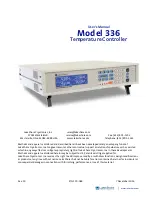
DocID018909 Rev 11
RM0090
Ethernet (ETH): media access control (MAC) with DMA controller
1232
be greater than or equal to the resolution of time stamp counter. The synchronization
accuracy target between the master node and the slaves is around 100 ns.
The generation, update and modification of the System Time are described in the
System Time correction methods
The accuracy depends on the PTP reference clock input period, the characteristics of the
oscillator (drift) and the frequency of the synchronization procedure.
Due to the synchronization from the Tx and Rx clock input domain to the PTP reference
clock domain, the uncertainty on the time stamp latched value is 1 reference clock period. If
we add the uncertainty due to resolution, we will add half the period for time stamping.
Transmission of frames with the PTP feature
When a frame’s SFD is output on the MII, a time stamp is captured. Frames for which time
stamp capture is required are controllable on a per-frame basis. In other words, each
transmitted frame can be marked to indicate whether a time stamp must be captured or not
for that frame. The transmitted frames are not processed to identify PTP frames. Frame
control is exercised through the control bits in the transmit descriptor. Captured time stamps
are returned to the application in the same way as the status is provided for frames. The
time stamp is sent back along with the Transmit status of the frame, inside the
corresponding transmit descriptor, thus connecting the time stamp automatically to the
specific PTP frame. The 64-bit time stamp information is written back to the TDES2 and
TDES3 fields, with TDES2 holding the time stamp’s 32 least significant bits.
Reception of frames with the PTP feature
When the IEEE 1588 time stamping feature is enabled, the Ethernet MAC captures the time
stamp of all frames received on the MII. The MAC provides the time stamp as soon as the
frame reception is complete. Captured time stamps are returned to the application in the
same way as the frame status is provided. The time stamp is sent back along with the
Receive status of the frame, inside the corresponding receive descriptor. The 64-bit time
stamp information is written back to the RDES2 and RDES3 fields, with RDES2 holding the
time stamp’s 32 least significant bits.
System Time correction methods
The 64-bit PTP time is updated using the PTP input reference clock, HCLK. This PTP time
is used as a source to take snapshots (time stamps) of the Ethernet frames being
transmitted or received at the MII. The System Time counter can be initialized or corrected
using either the Coarse or the Fine correction method.
In the Coarse correction method, the initial value or the offset value is written to the Time
stamp update register (refer to
Section 33.8.3: IEEE 1588 time stamp registers on
). For initialization, the System Time counter is written with the value in the Time
stamp update registers, whereas for system time correction, the offset value (Time stamp
update register) is added to or subtracted from the system time.
In the Fine correction method, the slave clock (reference clock) frequency drift with respect
to the master clock (as defined in IEEE 1588) is corrected over a period of time, unlike in the
Coarse correction method where it is corrected in a single clock cycle. The longer correction
time helps maintain linear time and does not introduce drastic changes (or a large jitter) in
the reference time between PTP Sync message intervals. In this method, an accumulator
sums up the contents of the Addend register as shown in
. The arithmetic carry
that the accumulator generates is used as a pulse to increment the system time counter.
















































